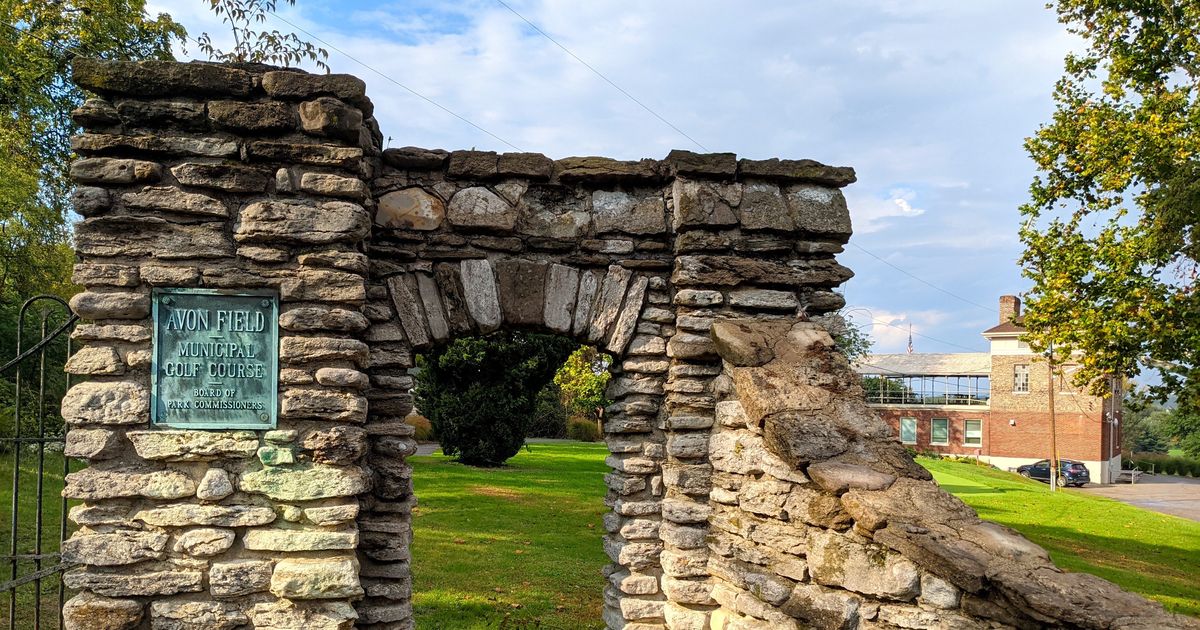Ask the builder: Build a stone wall and arch
My grandfather was a baker in Cincinnati in the very early 1900s. He and my grandmother owned and operated a neighborhood bakery in the Clifton Heights neighborhood just 400 feet from where I was born.
When he retired, he decided to build an eight-unit apartment building just down the street from the bakery. He named it Valley View because it had an amazing view of the Mill Creek valley. I never met him, because he was sent to heaven 15 years before I was born.
There are quite a few pictures in family albums of him standing next to limestone walls, arches and even a stone fountain he built with his own hands in the gardens of the building. How he managed to build such magnificent structures is a bit of a mystery.
Keep in mind there were no YouTube videos to watch, probably no good DIY books at the local library or DIY shows to watch on cable TV. Somehow, somewhere, my grandfather gleaned the information to build stone walls and arches himself. You can do it with his inspiration and a little help from me.
Almost any stone is suitable as a building material for exterior walls, arches and fountains. After all, the rock most likely withstood thousands of years of exposure before it was quarried or hand-picked from a road cut or stream bed.
My grandfather used pieces of fossiliferous limestone abundant in Cincinnati. Limestone is an excellent material to use. There are thousands of American buildings that use fine-grained limestone for their facades. It is extremely durable. Whenever building with stone outdoors, it is wise to install a solid foundation or footing. If you live where the ground freezes, make sure the bottom of this footing is below frost level.
The footing helps distribute the load of what you are building onto the ground below. I prefer my footings to be cast in concrete at least 8 inches thick with 5/8 inch diameter steel bars every 2 feet down the center to ensure the footing does not collapse or do not bend. The footing should be no less than 2 feet wider than the wall or arch structure you are going to build.
If you’re building a retaining wall 4 feet high or less, you’ll rarely get in trouble. The problem with retaining walls is that the overturning force increases at a higher rate the higher the wall goes. Any wall over 6 feet high should be designed by a structural engineer who has extensive experience in producing retaining wall plans.
Laying stone can be tricky, and I recommend building a small test structure first to get used to it. Make sure the stone is clean and dust free so the Portland cement mortar will adhere well. Most stones you work with are slightly harder to work with than brick. The brick has an aspiration. That is, the brick absorbs water from the mortar quite quickly. This allows the mortar to stiffen a few minutes after the brick is laid.
This doesn’t always happen with stone, so you often have to make the mortar mix a bit drier. When my grandfather worked with limestone, his mortar mix almost certainly looked like mashed potatoes, not applesauce.
I recommend you use a solid mortar that is one part Portland cement, three parts medium or coarse sand, and one-half part hydrated lime. Hydrated lime will make the mortar a little more sticky and greatly increase the strength of the mortar over time. All three ingredients are quite inexpensive.
If you have the time and want extra adhesion between the mortar mix and the stone, you can coat the top of each stone with cement paint just before applying the mortar mix. Most people won’t have the patience to do this. Cement paint is just a mixture of Portland cement and plain water. You mix the two together to achieve the consistency of regular latex paint.
Stone arches are not that difficult to build. The internet is full of videos and photographs of the type of arch shape you need to build using plywood or oriented strand board. The shape of the arch should be as wide as the stones used to create the arch.
The walls on which the arch rests must be substantial. You can again get clues, advice and inspiration from the many photographs of arches on the internet. You must realize that gravity pulls on the arch and wants to pull the vertical walls below. Sturdy walls will withstand Mother Nature’s desire to bring walls to the ground for many, many decades.
To give you an idea of the size of the walls, take a look at the limestone arch that graces the entrance to Avon Fields Golf Course in Cincinnati pictured with this column in line. The arched opening is about 3 feet wide, and the walls on either side of this opening are also a little wider than 3 feet. This stone arch has been in place for nearly a century with minimal maintenance, and it still looks stunning.
Before starting your project, I invite you to look at hundreds of photographs of stone walls, arches, etc., to get an idea of what is possible. Pay particular attention to how the mason cut and fitted the stones into the arch. I know you can do it. Just think about the company in which you will work with your project!
Subscribe to Tim Carter’s free newsletter at askthebuilder.com. Carter now streams live at 1 p.m. weekdays at youtube.com/askthebuilder.


Comments are closed.